As a camper of many years myself, and after having returned from visiting our HBT children up at URJ Camp George this past week, I’ve been thinking about how the magic of camp lies in those deep moments of connection, both big and small.
Whether it’s overlooking the stunning Maple Lake for a Pride Shabbat Service, working on prayer readings with a group of eight-year-olds, swimming in the lake, making pottery, riding bikes, sitting in the hallway preparing for the next program, chanting and singing loudly at mealtime, or simply hanging out in the cabins, each of these functions as an entry point to strong Jewish identity and Jewish friendships.
In turn, our campers are encouraged and enabled to live up to the injunction that is the namesake of this week’s parashah, Re’eh, which means “to see”.
They can see and discover who they are as their true and fullest selves, for all of their talents, their virtues and their potential.
They can see a Jewish way of life that is informal yet authentic, and learn through fun and lived experiences in an intensive and intentional community.
They can, as our parashah states, see habracha v’hak’lalah, “the blessing and the curse” (Deut 11:26), understand themselves and those around them at their highest and lowest points and choose for themselves the path of blessing.
It was a blessing to be at camp, and we are so fortunate that we have a number of ways to carry that spirit of blessing forward this coming year at Holy Blossom for our children and families, with that little bit of camp magic being found here on Bathurst Street as well, in deep connection to Jewish life, Jewish identity, and Jewish friends.
We start with Tot Shabbat this Friday evening, 11 August, at 5:30 pm.
We continue with our First Family Service of the season, Shabbat morning September 9, at 10:30 am.
Our YEC begins on Sunday morning 10 September (JK-Grade 5), and Monday night 11 September (Grade 6-Bagrut) respectively, and registration can be found here.
Then, of course, we have our many varied offerings for our families and for everyone over the High Holy Days of 5784, the details of which can be explored here.
May it be a year of magic, and may it be a year of connection, for our children and for all of us.




 Zodiac Sign – Virgo
Zodiac Sign – Virgo

 Two Stones
Two Stones



